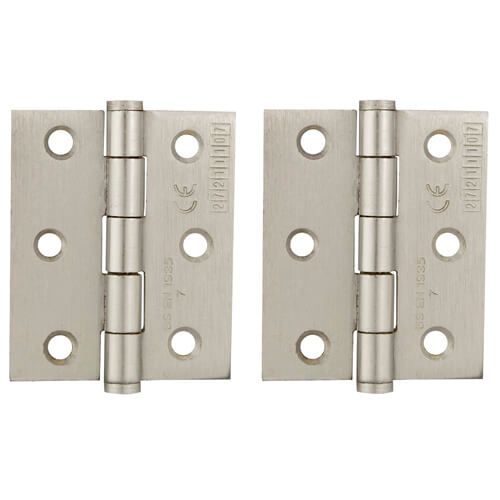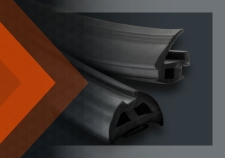
These terms and practices discussed in this article can be used for all types of hinges, but we will be focusing on butt hinges specifically. The 3 attributes to consider when selecting the right butt hinge for the door are its category of use, its grade rating, and the mass of the door.
1. The 4 Categories of Use
Light Duty
For use where the door has a ‘low frequency’ of use.
E.g. Domestic property and office doors that don’t have access for the general public.
Medium Duty
Doors that have a ‘medium frequency’ of use and where some consideration is needed to prevent misuse and accidents.
E.g. Domestic property and office doors that have limited access to the general public.
Heavy Duty
If a door has a ‘high frequency’ of use and if there is a high possibility of accidents and misuse.
E.g. Public buildings, and schools.
Severe Duty
For use on doors in public areas that are subject to potentially ‘high frequency’ of use and abuse.
E.g. Public areas with uncontrolled main entrances.
2. The Grades We Provide
BS EN 1935 is the European standard for the classification of the strength and durability of side-hung metal hinges. They are tested against a standard door (based on 3 hinges being fitted) and to a number of test operations (cycles). Higher grades may also require fire testing.
For a guide on calculating the door mass click here.
Grade 7
Any hinge marked as Grade 7 is classified as Medium Duty, able to hold a maximum door mass of 40 kg and durable up to 200,000 cycles.
Max. Door Mass: 40Kg
No. of Test Cycles: 200,000
Grade 13
These hinges are classed as Severe Duty hinges, durable up to 200,000 cycles and able to hold a max door mass of 120Kg (minimum 3 fitted).
Max. Door Mass: 120Kg
No. of Test Cycles: 200,000
3. Working Out The Mass Of Your Door
The mass of a door may be more than the actual weight of the door. When specifying hinges factors such as any fitted door closers must be considered.
Door closing devices increase the loading on the hinges and therefore create a higher rate of wear. To offset this, it is recommended that the door mass is greater than the actual door weight when calculating which hinge is suitable.
The predicted usage of the door can also affect the actual door mass when specifying hinges, with light usage allowing for a lower-grade hinge or very heavy usage requiring a stronger hinge to compensate for the added wear over time.
The below table gives a guide on how much to add or subtract from the door weight to find your actual door mass.
Door Closer = +20%
Door Closer (incorporating backcheck or hold open facility) = +75%
Light usage application = -10%
Extra-heavy usage application = +10%
A door that weighs 25Kg that will have medium use and no door closer.Examples:
Door Weight = 25Kg
Medium Usage = No Change
No Closer = No Change
Actual Mass = 25Kg
The same 25Kg door that will only see light use with a hold open overhead door closer.
Door Weight = 25Kg
Light Usage = -10%
Overhead Closer = +75%
Actual Mass = 40Kg
So Which Hinge Do You Need?
If you are specifying a hinge you will need to know where it will be used, how much use it will get and what the Actual Mass of the door will be.
Once you have these three pieces of information you can work out which hinge will be the best fit.
Remember
A minimum of 3 hinges will need to be fitted onto a door for it to meet the BS EN 1935 standards that the different grades are in reference to.
To view our range of Butt Hinges, click here.







